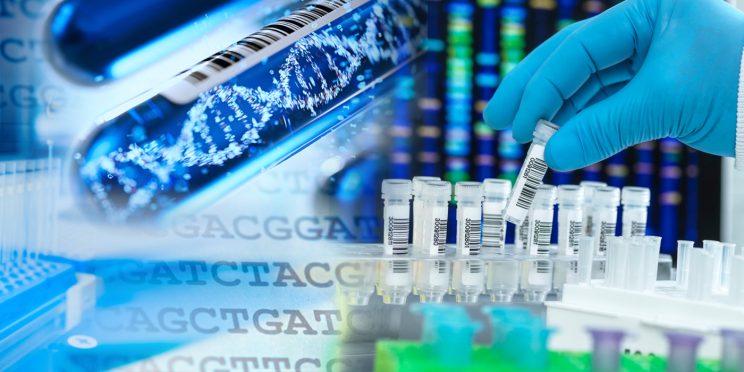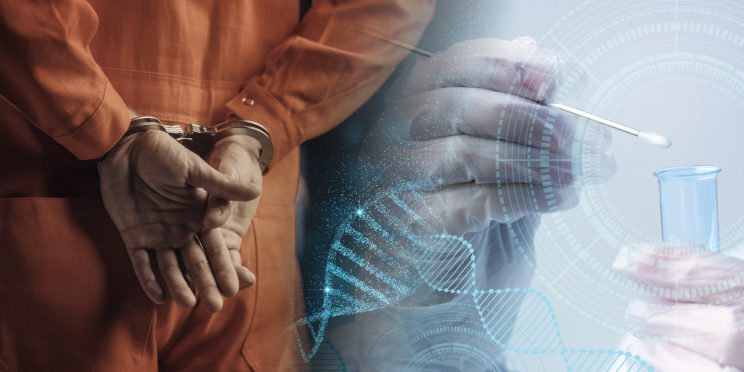This webinar originally occurred on January 14, 2021
Duration: 1.5 hours
Overview
Part I - Proteomics
As the sensitivity of DNA STR testing increases, the amount of sample required to provide a full STR profile becomes increasingly small, raising the possibility that a suspect’s STR profile might have resulted from touch or secondary DNA transfer. Consequently, knowing the source (e.g. blood, saliva, or semen) of a detected STR profile is becoming more important for the fair administration of justice as it can give context to a criminal investigation. Current routine forensic methods for detecting body fluids, including immunochromatographic techniques, are presumptive and cannot offer the same scientific and statistical confidence that is routinely taken for granted with STR testing. Proteomic mass spectrometry is a confirmatory method for body fluid identification. Each body fluid marker set consists of three proteins that have specific functions in each body fluid. The assay is more sensitive than presumptive tests, statistically sound, and suitable for high-throughput forensic lab work.
Part II - Raman Spectroscopy
Blood, semen, saliva, and other body fluids are among the most important forensic evidence collected at crime scenes. The rapid detection and identification of these fluids can help identify the perpetrator and victim. Additionally, body fluid analysis can aid in understanding the events, including the timeline of a crime. Ideally, a detection and identification platform for these fluids is sensitive, confirmatory, rapid, portable, non-destructive, and easy-to-use, providing crime scene investigators with maximal time for subsequent law enforcement activities.
Spectroscopic techniques have the potential to provide unique, label-free, molecular based signatures indicating the chemical composition of an unknown sample and often share several of the above attributes for forensic analysis. Infrared (IR) absorption and Raman scattering, on the other hand, are attractive vibrational spectroscopic methods for many bioanalytical applications. They are inherently multiplexing techniques because vibrational spectral features are narrow providing multiple and highly accurate identification markers for a given molecular signature.
However, conventional Raman spectroscopy is a relatively weak effect. For high quality Raman spectra large molecular concentrations, high excitation powers and longer signal acquisition times are required for accurate analytical identifications. To offset these potential liabilities, the technique of surface enhanced Raman spectroscopy (SERS) can be used to acquire Raman spectra. SERS results in the greatly enhanced Raman scattering intensities for molecules near nanostructured metal surfaces.
Part III - MicroRNA and mRNA
Body fluid identification is an important first step in forensic evidence processing. One common field method for body fluid identification (bfID) involves targeting RNA and exploiting reverse-transcriptase PCR (RT-PCR), followed by capillary electrophoresis on a commercial genetic analyzer. The Institute of Environmental Science and Research (ESR) has developed a method for detection and differentiation of body fluids in an unknown sample via amplifying messenger RNA (mRNA) targets, followed by electrophoretic separation of the amplicons. The potential exists to carry out these assays on a microdevice in an effort to decrease assay time, cost, and minimize user intervention relative to the use of commercial instruments. Researchers are developing a microdevice for forensic bfID using ESR’s validated mRNA panel coupled with RT-PCR and electrophoretic separation on a centrifugally-driven microfluidic disc. The microfluidic disc can efficiently separate RT-PCR amplicons from the mRNA panel in fewer than 15 minutes using single and mixed samples. Preliminary data shows progress towards adapting and integrating the RT-PCR protocol with separation microfluidic disc technology.
While the use of messenger RNA as a biomarker for body fluid identification (BFI) has been explored for over 20 years, the utility of microRNAs (miRNAs) for BFI is more recent and still under investigation. MiRNAs are small non-coding RNAs 18-25 nucleotides in length, and there is significant interest in their use for forensic casework because of their tissue-specific expression and high resistance to degradation. They have also been shown to co-extract and be detectable in DNA extracts, which could make the use of miRNAs a more easily implementable molecular BFI method. Differences in platforms, detection chemistries, and normalization methods have resulted in inconsistencies between studies; however, the community is starting to form a consensus regarding certain miRNA markers for specific body fluids, and classification and/or prediction models have been presented with over 90% prediction accuracy. In this presentation, a brief history and discussion of the advantages and potential disadvantages of body fluid identification using RNA are discussed, followed by a review of the research and methods for miRNA detection for BFI.
Part IV - Discussion
There was a question and answer session with the full panel after the presentations concluded.
Learning Objectives
- Audience members will learn about proteomics and its potential in high-throughput forensic laboratories.
- Audience members will learn about Surface Enhanced Raman Spectroscopy and the rapid detection and identification of body fluids.
- Audience members will learn about MicroRNA, mRNA, and the development of a microfluidic device used to detect and differentiate body fluids from an unknown sample.
Presenters
- Chuck Heurich, MS | National Institute of Justice
- Dr. Don Siegel, Ph.D. | Office of Chief Medical Examiner, New York City
- Dr. Sarah Seashols-Williams, Ph.D. | Department of Forensic Science, Virginia Commonwealth University
- Dr. Lawrence Ziegler, Ph.D. | Division of Materials Science & Engineering, Boston University
- Tiffany Layne, MS | Department of Chemistry, University of Virginia
Funding for this Forensic Technology Center of Excellence webinar has been provided by the National Institute of Justice, Office of Justice Programs, U.S. Department of Justice.
The opinions, findings, and conclusions or recommendations expressed in this webinar are those of the presenter(s) and do not necessarily reflect those of the U.S. Department of Justice.
Contact us at ForensicCOE@rti.org with any questions and subscribe to our newsletter for notifications.




